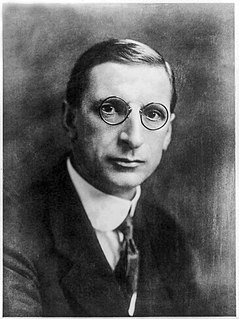Related Research Articles

The Irish general election of 1918 was that part of the 1918 United Kingdom general election which took place in Ireland. It is now seen as a key moment in modern Irish history because it saw the overwhelming defeat of the moderate nationalist Irish Parliamentary Party (IPP), which had dominated the Irish political landscape since the 1880s, and a landslide victory for the radical Sinn Féin party. It had never stood in a general election, but had won six seats in by-elections in 1917–18. Sinn Féin had vowed in its manifesto to establish an independent Irish Republic. In Ulster, however, the Unionist Party was the most successful party.
Londonderry City was a parliamentary constituency in Ireland. It returned one Member of Parliament (MP) to the House of Commons of the Parliament of the United Kingdom, elected by the first past the post voting system.
Waterford City was a United Kingdom parliamentary constituency, in southeast Ireland.
West Down was a UK Parliament constituency in Ireland which returned one Member of Parliament from 1885 to 1922, using the first past the post electoral system.
South Fermanagh was a UK Parliament constituency in Ireland.
South Londonderry was a UK Parliament constituency in Ireland. It returned one Member of Parliament (MP) to the British House of Commons from 1885 until it was abolished in 1922.
Ormeau, a division of Belfast, was a UK parliamentary constituency in Ireland. It returned one Member of Parliament (MP) to the House of Commons of the United Kingdom from 1918 to 1922, using the first past the post electoral system.
Pottinger, a division of Belfast, was a UK parliamentary constituency in Ireland. It returned one Member of Parliament to the House of Commons of the United Kingdom from 1918 to 1922, using the first past the post electoral system.
Shankill, a division of Belfast, was a UK parliamentary constituency in Ireland. It returned one Member of Parliament (MP) to the House of Commons of the United Kingdom to 1918 to 1922, using the first past the post electoral system.
St Anne's, a division of Belfast, was a UK parliamentary constituency in Ireland. It returned one Member of Parliament (MP) to the House of Commons of the United Kingdom from 1918 to 1922, using the first past the post electoral system.
Victoria, a division of Belfast, was a UK parliamentary constituency in Ireland. It returned one Member of Parliament (MP) to the House of Commons of the United Kingdom from 1918 to 1922, using the first past the post electoral system.
Mid Down was a UK parliamentary constituency in Ireland. It returned one Member of Parliament (MP) to the British House of Commons from 1918 to 1922, using the first past the post electoral system.
St Michan's, a division of Dublin, was a UK parliamentary constituency in Ireland. It returned one Member of Parliament (MP) to the British House of Commons 1918–1922, using the first past the post electoral system.

St Stephen's Green, a division of Dublin, was a UK parliamentary constituency in Ireland. It returned one Member of Parliament (MP) to the British House of Commons 1885–1922.
North East Tyrone was a parliamentary constituency in Ireland. From 1918 to 1922 it returned one Member of Parliament (MP) to the House of Commons of the Parliament of the United Kingdom, elected by the first-past-the-post voting system.
North West Tyrone was a UK parliamentary constituency in Ireland. It returned one Member of Parliament (MP) to the British House of Commons from 1918 to 1922.
National University of Ireland (NUI) is a university constituency in Ireland, which currently elects three senators to Seanad Éireann. Its electorate is the graduates of the university, which has a number of constituent universities. It previously elected members to the House of Commons of the United Kingdom (1918–21), to the House of Commons of Southern Ireland (1921) and to Dáil Éireann (1918–1936).
University of Dublin is a university constituency in Ireland, which currently elects three senators to Seanad Éireann. Its electorate comprises the undergraduate scholars and graduates of the University of Dublin, whose sole constituent college is Trinity College Dublin, so it is often also referred to as the Trinity College constituency. Between 1613 and 1937 it elected MPs or TDs to a series of representative legislative bodies.
Anthony G. Millar was an Irish Fianna Fáil politician.
References
- 1 2 Leigh Rayment's Historical List of MPs – Constituencies beginning with "B" (part 3)
- ↑ Arthur G. M. Hesilrige, ed. (1918). Debrett's House of Commons and The Judicial Bench 1916. London: Dean and Son. p. 135. Retrieved 23 May 2014.